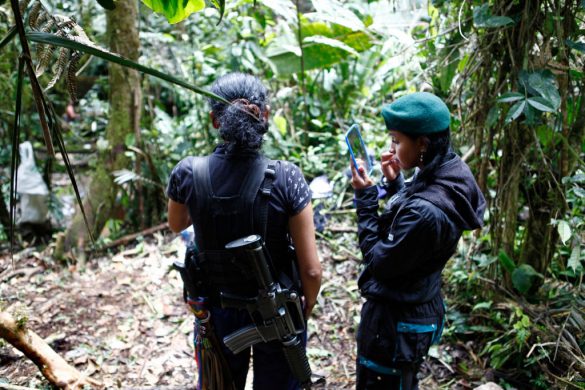Rome, 17 Feb.: The Food and Agriculture Organization (FAO) and the UN World Food Programme (WFP) said Friday that while Sudan was likely to reap a reasonably good harvest in 2005-2006, almost seven million people would still require food aid over the coming year.
Most of the needy have either been forced to flee their homes by fighting or are in the process of returning home following the 2005 Comprehensive Peace Agreement. Moreover, vulnerable households will for the most part be unable to benefit from the harvest due to the currently prevailing high cereal prices.
The FAO/WFP Crop and Food Supply Assessment Mission, carried out late last year, found that Sudans overall cereal production in 2005/06 amounted to about 5,3 million tonnes, 55 percent higher than the very poor 2004/05 harvest and 17 percent above the average of the previous five years.
Favourable rainfall over most of the country, low incidence of pests and diseases, improved security in southern Sudan and slightly improved security in Darfur at planting time starting last May resulted in an increased area of cultivation. The total area of cultivated land across the country was 57 percent above that of last year.
– This is a heartening picture compared to previous years and the people of Sudan need all the help they can get, particularly from nature. But many also need the help of the international community, especially in the troubled region of Darfur and in southern Sudan, which is just beginning to recover from more than 20 years of civil war, said WFP Country Director Ramiro Lopes da Silva.
Despite the estimated above average crop, the mission found that some 6,7 million people require about 800.000 tonnes of targeted food assistance in 2006. These beneficiaries include more than two million internally displaced persons (IDPs), about 900.000 returnees and close to 3,5 million highly vulnerable people in Darfur, southern Sudan and marginal areas of central and eastern parts of the country.
Unequal income distribution, problems of physical and financial access to food due to war, displacement, and poor infrastructure, a weak marketing system and economic isolation are some of the main factors behind the food insecurity of millions of people and their exposure to destitution, hunger and malnutrition.
The assessment also found that, in 2005, the timely provision of appropriate seeds and tools by FAO and other humanitarian agencies benefited a large number of needy farmers.
A WFP road rehabilitation project in the south has increased trade, especially between Uganda and the state of Central Equatoria, and between Kenya and the state of Eastern Equatoria. But attacks by the Lords Resistance Army in the south/southeast remain a constant threat to any return to normal living and some key roads remain impassable thereby inhibiting large-scale trade.
WFP plans to mobilize and distribute 731.000 tonnes of food to more than six million people across Sudan in 2006. In addition to general food distribution, assistance will be provided through support to recovery activities and therapeutic and supplementary feeding projects to ensure that the most vulnerable are reached.
FAO recently appealed for 40 million US dollar to support its agricultural relief and recovery activities throughout the huge country in 2006, which include the distribution of seeds and tools, fishing equipment and livestock medicines to hundreds of thousands of vulnerable families, particularly returnees and internally displaced persons.
– Timely assistance to the agricultural sector, including emergency support to returnees and other vulnerable farming communities before the start of the next cropping season in April/May in southern Sudan and June/July in northern Sudan, is urgently required, said Henri Josserand, Chief of FAOs Global Information and Early Warning System.
Kilde: www.fao.org















